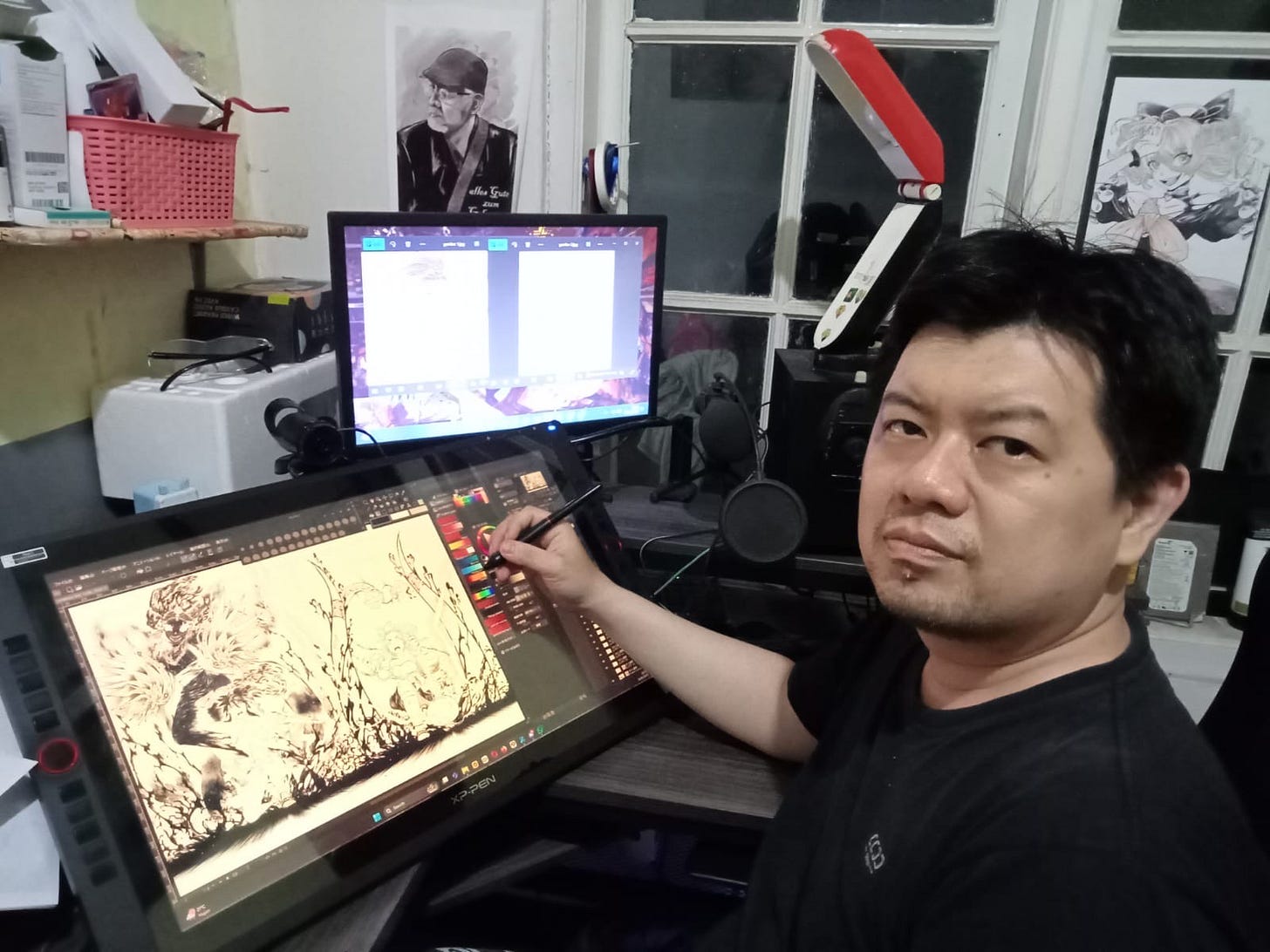Japanese startup eyes Indonesian comic scene
DouDoujin digital manga platform slated to launch in February for comic artists worldwide
This is a feature story from Animenomics, covering the business of anime and manga. Today’s story is written by Jakarta-based correspondent Yohana Belinda.

The global fascination with manga has experienced an extraordinary surge in recent years. From North America to Southeast Asia, audiences are engaging with manga at an unparalleled rate. This remarkable growth can largely be attributed to the newfound accessibility that readers now enjoy, making it easier than ever to dive into this captivating world.
Yet, in many regions across the globe, there remains a distinct lack of online publishing platforms to adequately support the burgeoning manga industry.
Rizky Arrydesta Suherman, an Indonesian comic artist behind works of CANDALA, a story inspired by the mythical Indonesian creature Buto, has pointed out the challenges facing the local comic scene. He notes a significant lack of supportive collectives, especially those that advocate for creative freedom.
“Lately, many creators have voiced concerns,” he said. “When their work gains popularity, whether through platforms like Webtoon or by catching the attention of publishers such as Kodansha in Japan, they often find themselves losing creative freedom, compromising their artistic autonomy.”
Suherman stressed that Indonesia needs support from countries with successful platforms that empower creators like him to showcase their stories on the global stage. He pointed to Japan as a model, noting its comprehensive support for market research, including identifying popular story themes and character designs that resonate with audiences.
Suherman himself has no intention of focusing on the print market. Instead, being published on international platforms will be a crucial way for both him and other local comic artists to gain recognition at home.
“There is a prevailing cultural sentiment in Indonesia where artists are more highly regarded once they have achieved recognition on the international stage,” he remarked.
Manga and Japanese culture have a particularly strong following in Indonesia. It’s no wonder, then, that pursuing a career tied to Japanese culture, such as becoming a manga artist, remains a cherished aspiration for many.



